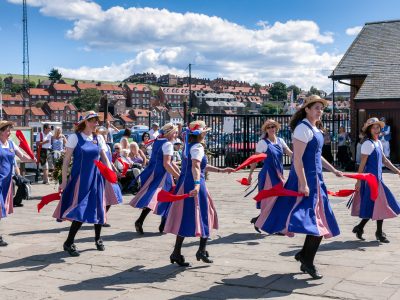May Day, a vibrant and lively holiday celebrated on 1 May, has deep-rooted origins in ancient pagan traditions. This joyous occasion marks the arrival of spring and embraces the flourishing growth and fertility that accompanies this season. With its rich historical and cultural significance, May Day continues to captivate people across modern Europe.
As winter recedes and nature awakens, May Day ushers in the spirit of spring with its exuberant festivities and colourful traditions. This celebration, deeply intertwined with ancient pagan rituals, has survived the test of time and continues to enchant people around the world.
The ancient Pagan origins
May Day originates in ancient pagan cultures, where it was celebrated as a significant moment in the agricultural calendar. These ancient civilisations recognised the transformative power of spring and sought to honour it through various rituals and ceremonies. With its focus on new life, fertility, and the rebirth of nature, May Day became a pivotal moment to celebrate the changing seasons and the promise of abundance.
Beltane: The Celtic celebration of new life
One of the earliest known celebrations associated with May Day is Beltane, an ancient Celtic festival that marked the beginning of summer. Beltane, meaning “bright fire” in Celtic languages, was a time of great significance for the Celtic people. It was believed to be a liminal period when the boundaries between the human world and the supernatural realm were blurred.
The Roman influence: Floralia and the goddess of flowers
The Roman Empire greatly influenced the cultural landscape of Europe, and their springtime celebration known as Floralia played a role in shaping the traditions of May Day. Floralia, dedicated to Flora, the goddess of flowers, was a festival of joy, merriment, and fertility. Romans celebrated Floralia with colourful processions, theatrical performances, and an abundance of flowers.
The Green Man and Jack-in-the-Green

The Green Man, also known as Jack-in-the-Green, is a traditional symbol associated with May Day. This character, originating in England during the 1700s, represents the spirit of nature and the vitality of the green world. Adorned with elaborate frameworks covered in flowers and foliage, the Green Man embodies the interconnectedness between humans and the natural environment.
Morris Dancing
Morris dancing, a traditional English ritual dance with roots dating back to medieval times, is closely associated with May Day celebrations. This lively and rhythmic form of dance involves a group of dancers clad in vibrant costumes, often accompanied by musicians. The dancers use sticks, swords, and handkerchiefs as props, adding a dynamic element to the performance.
May Day in the Middle Ages: Festivities and traditions
May Day was firmly established as a joyous celebration in England by the Middle Ages. The festivities during this time were filled with merriment and revelry as people embraced the arrival of spring. May Day became a time for communities to come together, celebrate the end of winter, and welcome the bountiful season of growth.

Despite the widespread enjoyment of May Day celebrations, Puritan opposition to what they saw as pagan customs led to the suppression of certain traditions. Maypole dancing, a central feature of May Day festivities, became a target of Puritan disapproval. They associated maypole dancing with immorality and superstition, leading to its prohibition in 1644. King Charles II reinstated the tradition in 1660.
Despite periods of suppression and cultural shifts, May Day has experienced a revival. People across Europe and other parts of the world embrace the spirit of May Day, organising various festivities to celebrate the arrival of spring. These modern celebrations often combine elements of ancient pagan traditions with contemporary customs, creating a vibrant and inclusive atmosphere for all to enjoy.
May Day, with its ancient pagan origins and rich cultural heritage, continues to captivate and inspire people worldwide. From the Celtic festival of Beltane to the Roman influence of Floralia and the customs of maypole dancing and Morris dancing, May Day represents a celebration of new life, fertility, and the vibrant growth of spring.





